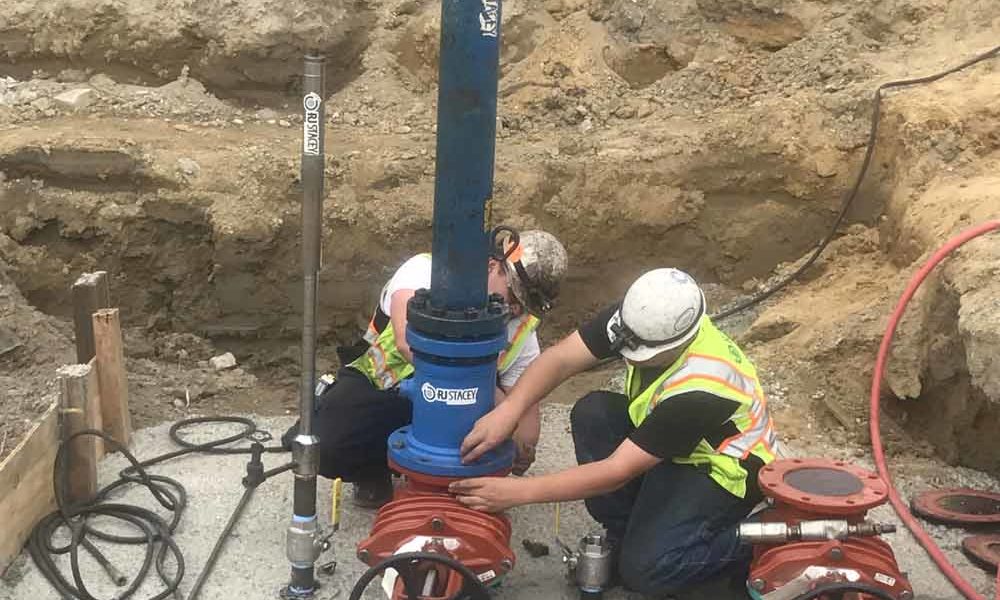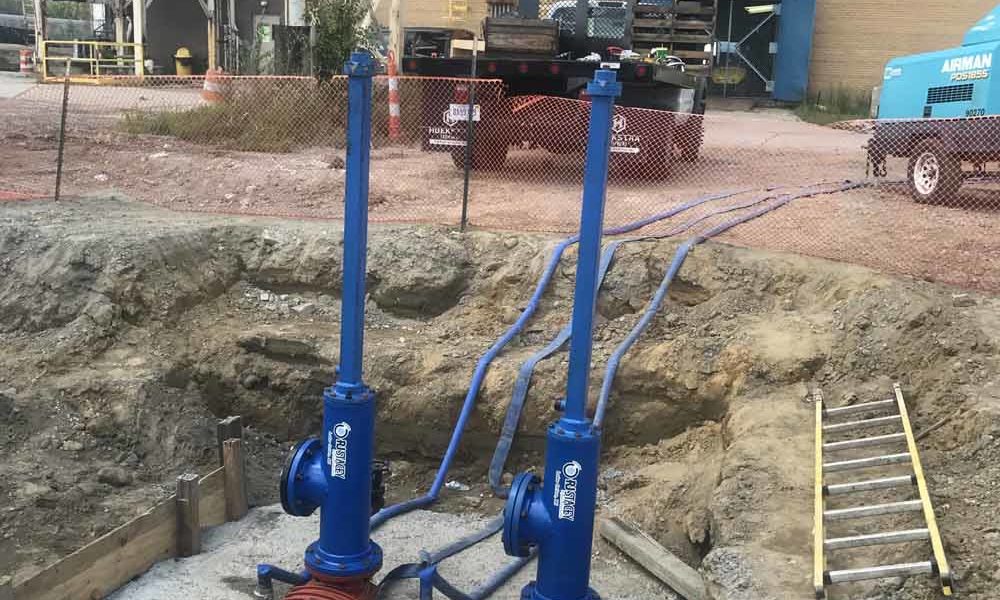Place:
North American Auto Assembly Plant
Challenge:
In order to expand existing assembly area an adjacent facility needed to be demolished and all services cut and capped. The 16” 150psi water service to the old facility had no isolation valve other than one which was over 50 yrs. old and would also isolate and shut down large portions of the operating Assembly plant. Additionally, where the plant wanted to cut and cap the pipe was in a major roadway necessitating a confined space access to the crew doing the cutting and capping. Safety of this crew in the confined space, with limited egress, was paramount importance to everyone.
Solution:
RJ Stacey working with plant safety, and the general contractor identified a location upstream from the desired cut/cap location but downstream of operating facilities. In this location, we could perform a redundant “double block and bleed” set of linestops. This satisfied plant safety requirement that the general contracting crew have two isolation points when cutting into a pipeline with hazardous contents or in a confined space with limited escape.
This solution required RJ Stacey perform four hot taps. One small hot tap on the extreme downstream to be used as a blowdown to relieve all residual pressure once the linestops were set. A pair of the large bore hot taps for insertion of the folding head linestops. And the last tap was a small bore bleed port between the two stopping heads.
Next, we attached two 16”x12” folding head linestop machines, and inserted the heads into the still live pipeline. What this achieved was two redundant heads blocking all water from traveling downstream. While in practice 100% of the work was being done by the upstream head, if it suffered a failure the second head 2’ downstream was the safety factor. The “bleed port” between the two heads would act as an indicator and alert the crew if the first head was to start leaking. In this way, the redundant downstream linestop would never be pressurized without the crew working downstream being warned to evacuate the hole. Once the job was complete all equipment was recovered and standard RJ Stacey completion plugs were set allowing reburial of the entire site, all work done without any effect upstream.
Results/Benefits:
The Double block and Bleed linestop allowed the construction work to proceed immediately on the new paint shop without waiting on a holiday several months away. Additionally, it alleviated two potential issues with the “wait for the holiday” option. First was that the main isolation valves were over 50 years old and had not been exercised in anyone’s memory, even if they waited for the holiday no one was sure these valves would be operational. Second, isolating nearly a mile upstream would have dewatered the entire system causing contamination concerns at startup. The RJ Stacey double block and bleed solved the mechanical, safety, and scheduling issues all at the same time.



